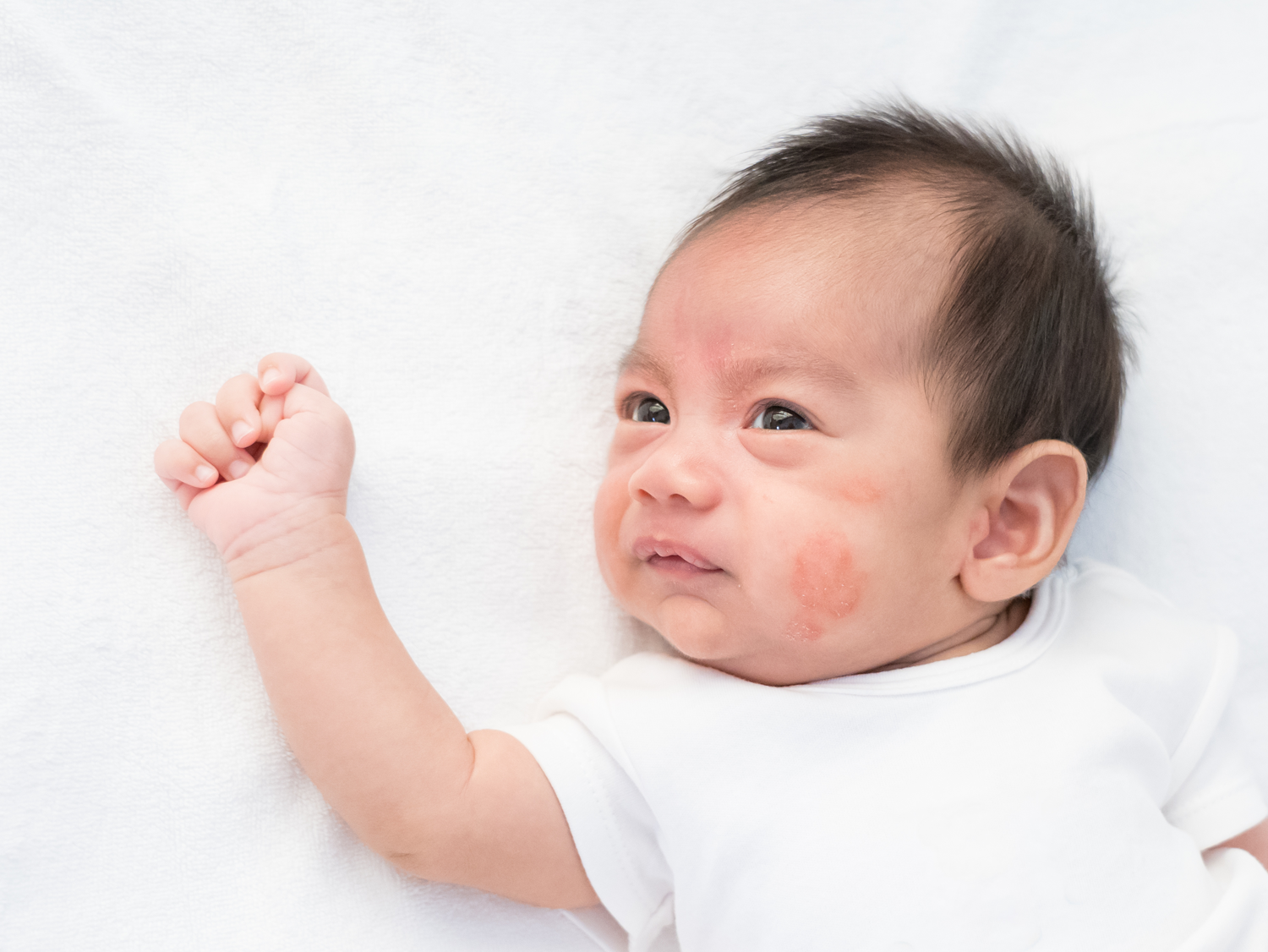Struggling with your child’s itchy, red skin? You’re not alone. Eczema, also known as atopic dermatitis, is one of the most common skin conditions in babies and young children.
As a Paediatrician, I often see how distressing eczema can be for both parents and children, who are constantly itching, uncomfortable and losing sleep.
The good news is, with the right treatment and care, eczema can be well managed.
This guide explains everything parents need to know about eczema in babies and children: what causes it, what it looks like, how to treat flare-ups, and when to seek medical advice. You’ll also find answers to frequently asked questions and practical advice for everyday care.
What Is Eczema?
Eczema is a chronic inflammatory skin condition that affects around 30% of children in Australia. It causes dry, red, itchy, and inflamed skin, and symptoms tend to come and go in cycles.
Although there is no cure, eczema can usually be well managed. About 50% of children improve significantly by the age of two, and most will eventually grow out of it.
What Causes Eczema?
Eczema is believed to be caused by a combination of genetics and environmental factors. Children with eczema often have a weaker skin barrier, which makes it harder to retain moisture and easier for irritants and allergens to get in.
If there’s a family history of eczema, asthma or hay fever, your child is more likely to develop eczema.
Common eczema triggers include:
- Dry weather or sudden temperature changes
- Overheating or sweating
- Soaps, bubble baths, detergents and antiseptic washes
- Exposure to sand, dirt, carpet or grass
- Chlorine from pools
- Dust mites or pet fur (especially if your child is allergic)
- Wool or synthetic fabrics
- Toothpaste containing SLS
- Viral or bacterial infections
- Saliva, dummies, or acidic foods around the mouth
- Food allergies (less common)
- Emotional stress
What Does Eczema Look Like?
Eczema usually appears as patches of skin that are:
- Dry
- Itchy
- Red and scaly
Sometimes during a flare-up, the skin can ooze or weep. If it becomes infected, it may blister, crust over, or develop yellow discharge. Repeated scratching can cause the skin to become thick and leathery, a process called lichenification.
Eczema by Age
Babies with eczema
Eczema in babies often appears on the face, scalp, behind the ears and body. It may also affect the outer parts of the arms and legs (known as the extensor surfaces), especially in areas that rub during crawling, such as the elbows, wrists, knees and ankles. The rash is usually dry, red and itchy, and can disturb sleep.
Toddlers and children
In toddlers and older children, eczema often appears in the skin creases, such as the elbows, knees, wrists and ankles.
In more severe cases, eczema can spread across larger areas of the body.
After a flare-up, pale patches (called post-inflammatory hypopigmentation) may appear. These are temporary and fade as the skin heals.
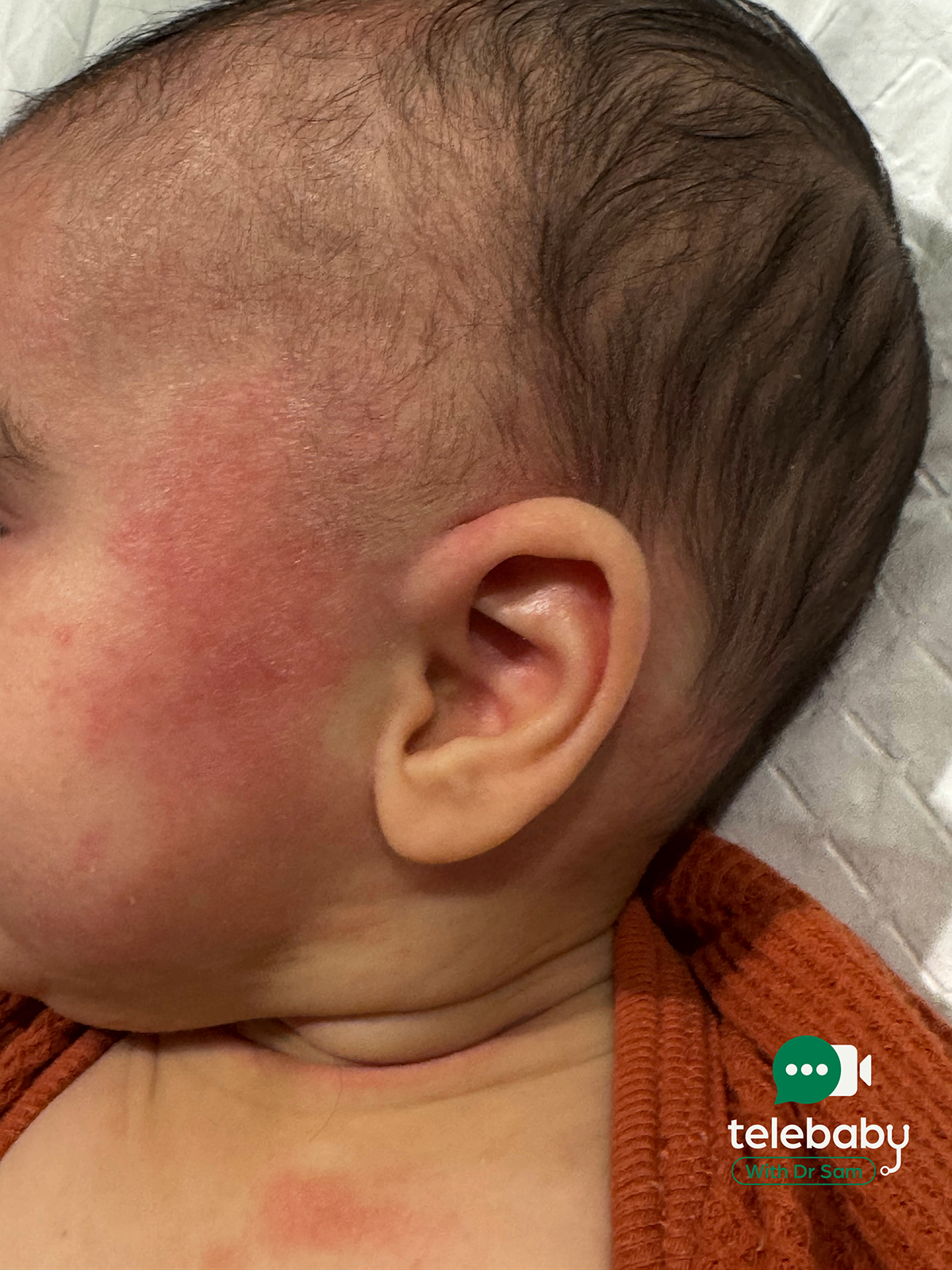
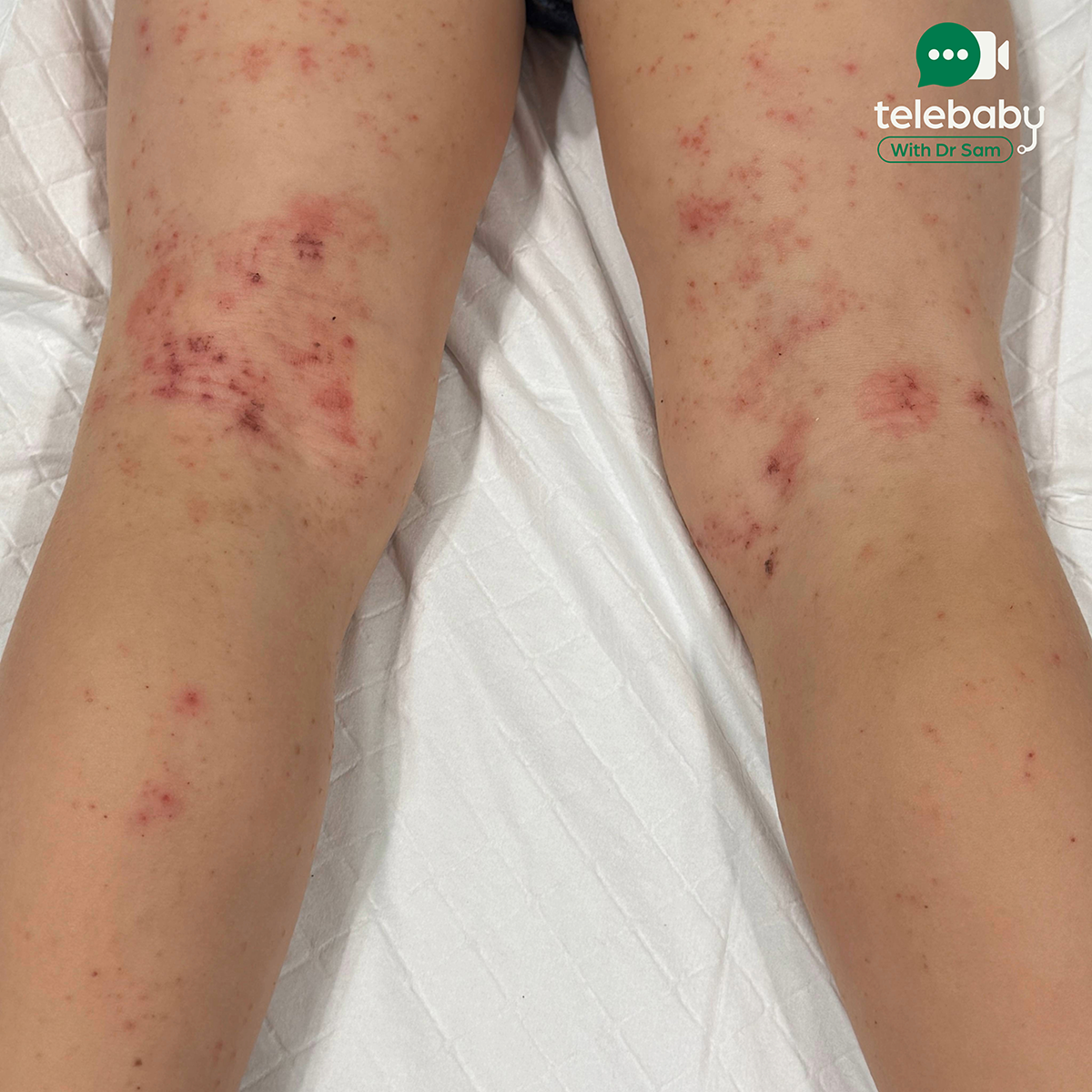
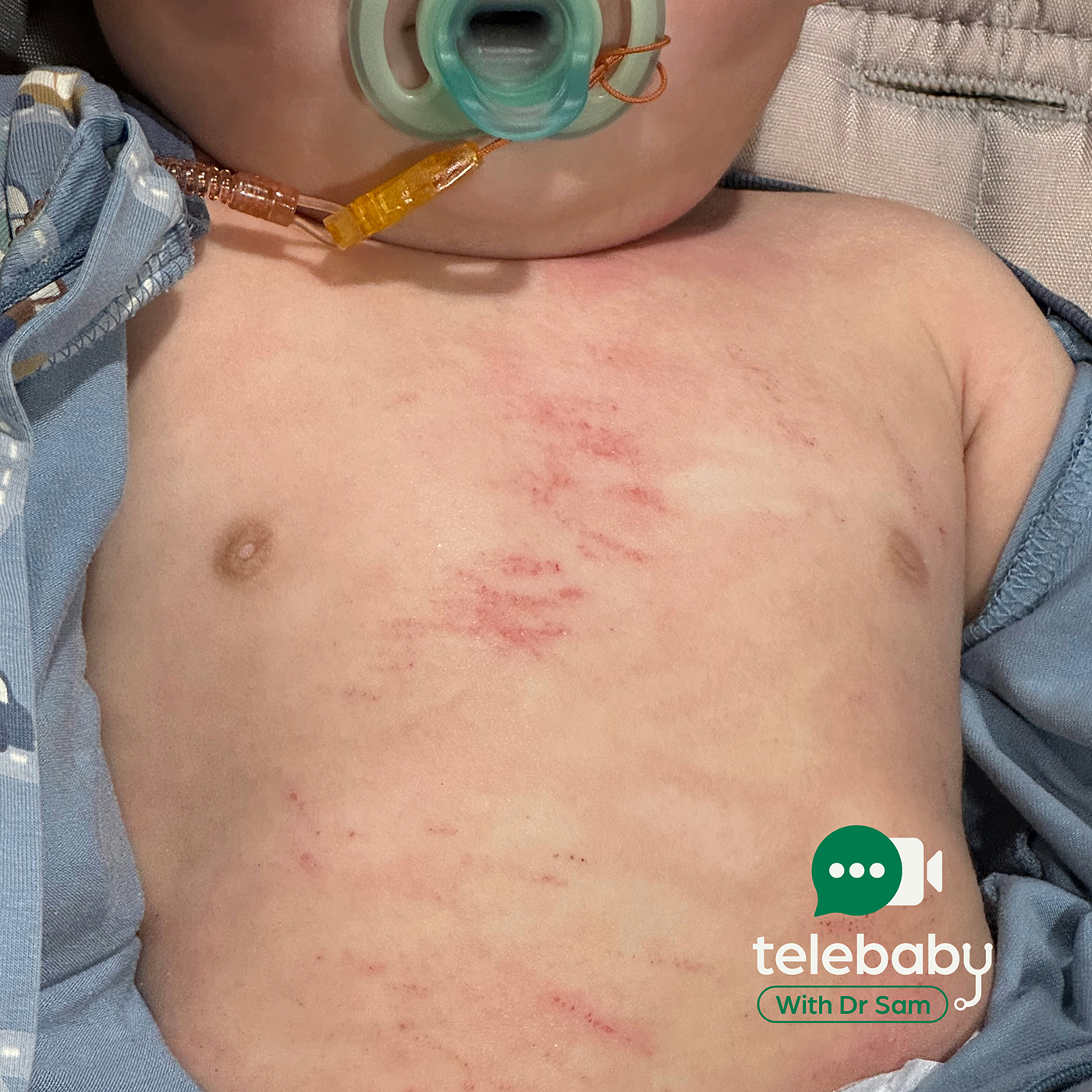
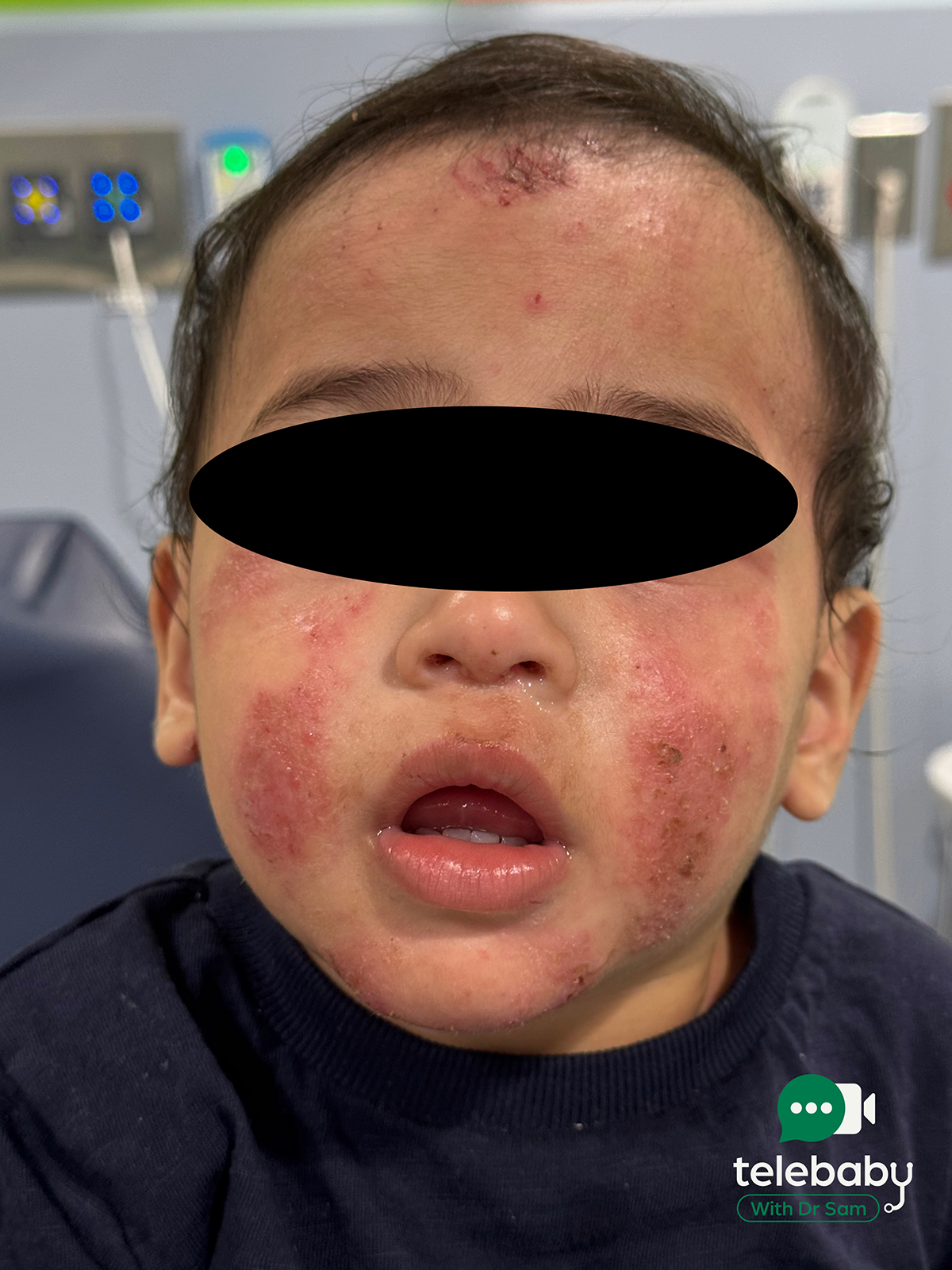
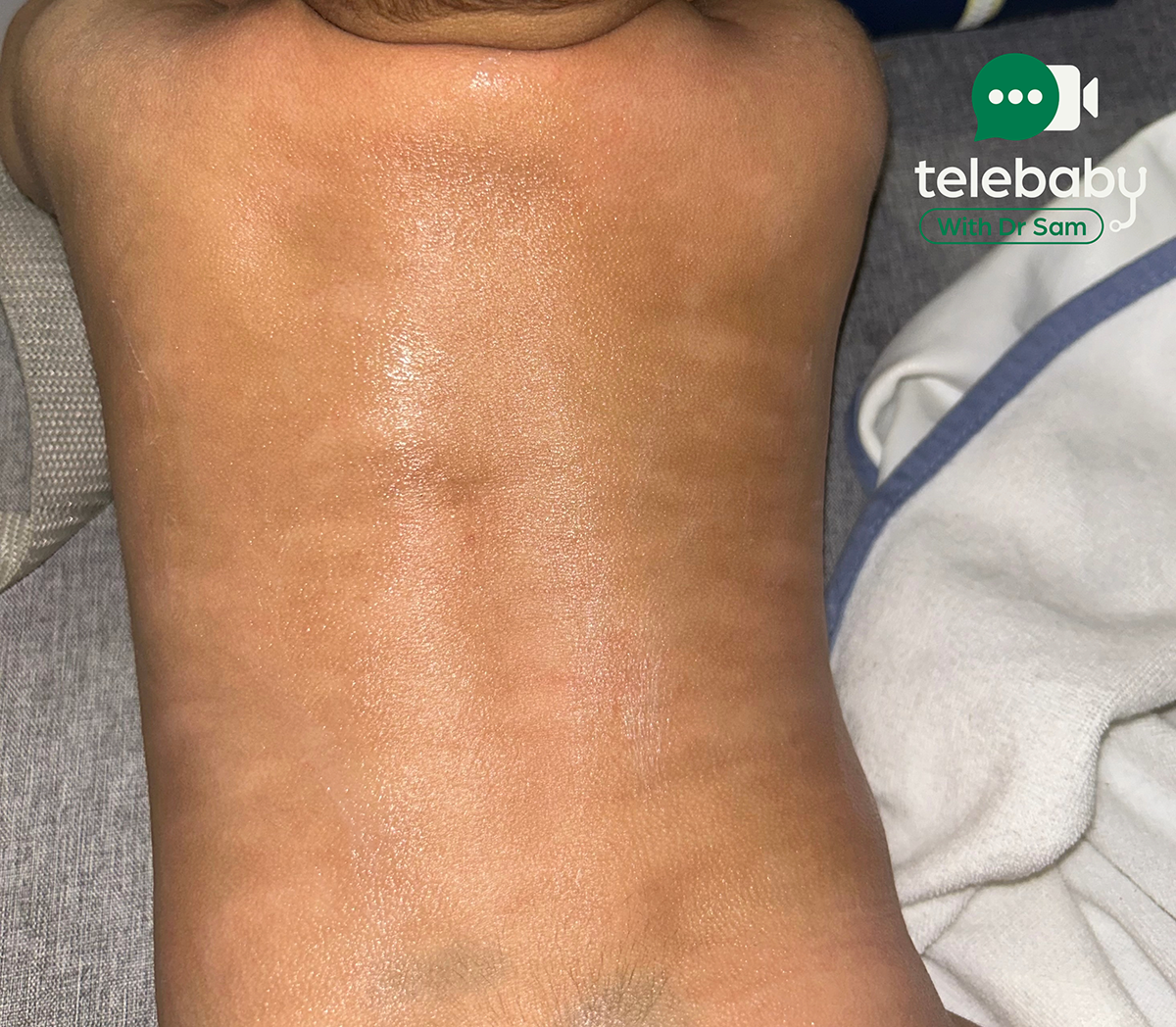
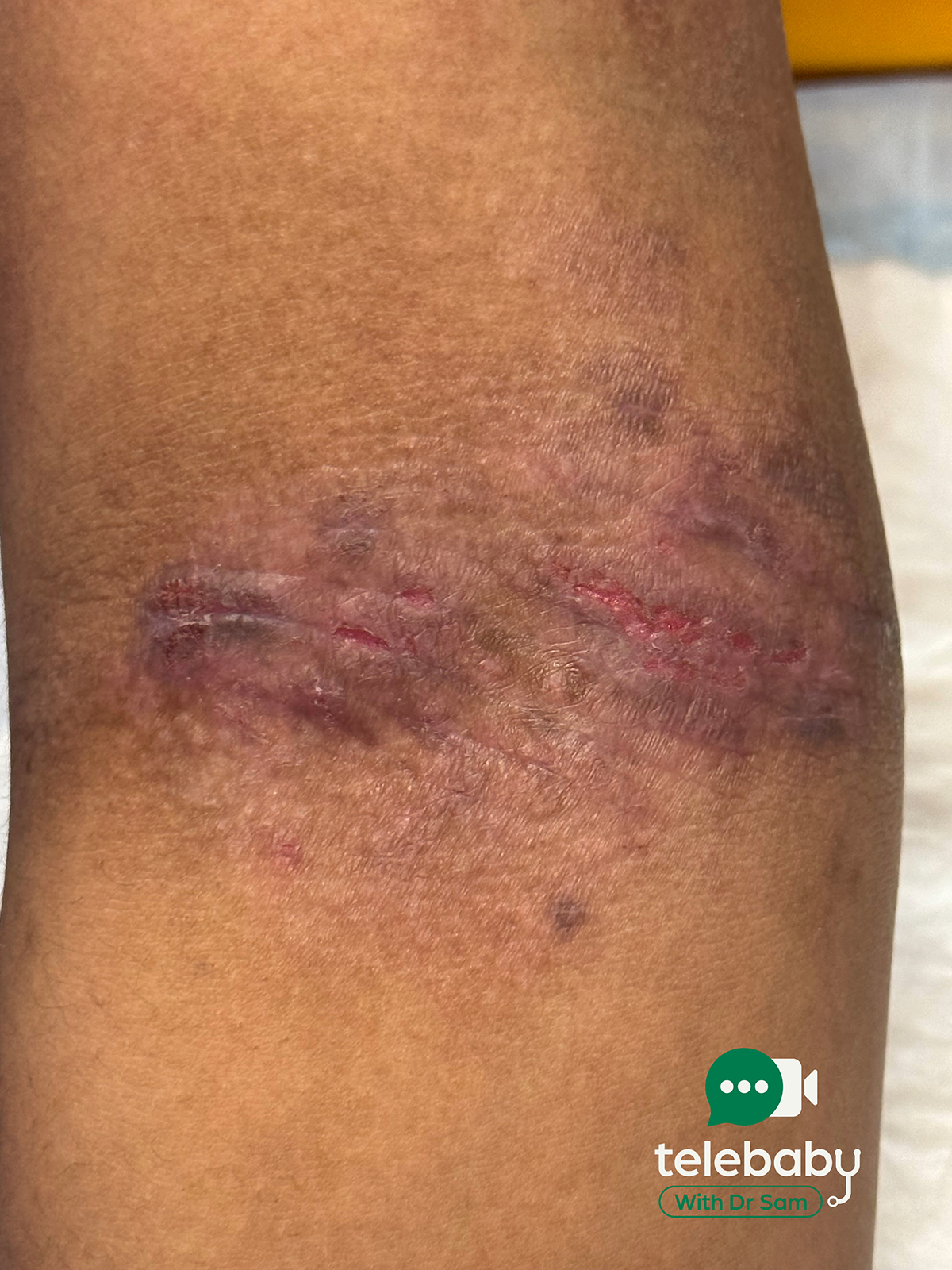
How Is Eczema Diagnosed?
Your doctor can usually diagnose eczema by examining your child’s skin and asking about symptoms. Allergy testing is sometimes recommended if other symptoms are present.
Eczema Treatment: What You Can Do at Home
Eczema can be well controlled with a consistent skincare routine. Here’s how:
1. Moisturise Often
- Use thick, fragrance-free moisturiser at least twice a day
- Apply moisturiser immediately after bathing (within 3 minutes), while the skin is still moist, to lock in moisture
- Keep moisturising even when the skin looks clear
- Avoid creams that contain plant or food ingredients like coconut, milk or almonds, as these may increase the risk of developing a food allergy
Tip: Ointments are more moisturising than creams, but creams are easier to apply over large areas
2. Bathe Smart
- Keep baths and showers short (5–10 minutes) and use lukewarm water
- Use a gentle, soap-free wash
- Avoid soaps, bubble baths and detergents
- Add bath oil if the skin is very dry
- Gently pat the skin dry and apply moisturiser immediately while the skin is still moist
3. Avoid Triggers
- Keep your child cool, as heat can make eczema worse
- Use laundry products designed for sensitive skin
- Dress your child in soft, breathable fabrics like cotton
- Keep fingernails short to help prevent skin damage from scratching
- Limit exposure to common irritants such as dirt, sand, and grass
- If your child has a confirmed allergy, reduce contact with dust mites and animal fur
4. Use Steroid Creams for Flare-Ups
- Topical steroids help reduce redness, inflammation and itching
- Apply the steroid cream to red or inflamed skin first, then layer moisturiser on top
- When used properly, steroid creams are safe and effective
- Always follow your doctor’s instructions on how long and where to use them
5. Wet Dressings for Severe Eczema
Wet wraps can help soothe severe flare-ups and reduce itching, especially at night.
How to apply wet dressings:
- Bathe your child and gently pat the skin dry
- Apply steroid cream to inflamed areas (if prescribed)
- Apply a thick layer of moisturiser over the entire area
- Soak clean cloths (like cotton, Tubifast, or disposable towels) in a bowl of lukewarm water
- Gently wring out excess water and wrap the damp cloths around the affected areas
- For the torso, use a damp T-shirt or singlet
- Cover with a dry layer (such as crepe bandages), wrapped firmly but not tightly
- Leave the dressings on for a few hours or overnight. Remove them before they dry out
What Other Treatments Are Available?
- Non-steroidal creams (e.g. pimecrolimus, tacrolimus)
- Antihistamines to reduce itching and help with sleep
- Bleach baths to lower skin bacteria (see FAQ below)
- Oatmeal baths may soothe itchy skin but should be avoided in babies who haven’t started eating oats or are allergic to them (see FAQ below)
- Probiotics – research is still emerging
- Phototherapy (light therapy) for severe eczema
⚠️ Always check with your doctor before starting any new treatment.
Food Allergies and Eczema: Are They Linked?
Children with eczema are more likely to develop food allergies, but food allergies are rarely the cause of eczema.
If your child has both eczema and a food allergy, certain foods may occasionally trigger flare-ups. Most food allergies cause immediate symptoms within 30 minutes, such as hives, vomiting or irritability. Less commonly, food allergies may contribute to delayed eczema flares.
👉 Interesting fact: There is evidence that managing eczema well in infancy may reduce the risk of developing food allergies later.
⚠️ Do not remove foods from your baby’s diet without medical advice, especially if they are under 12 months.
When to See a Doctor
Make an appointment with your doctor if:
- Your child’s eczema is not getting better with treatment
- Itching is affecting their sleep or daily comfort
- The skin shows signs of infection (yellow crusts, pus or spreading redness)
- You’re concerned about a possible food allergy or if eczema is interfering with feeding
Summary
Eczema is very common in babies and young children, and with the right care, it can often be managed comfortably at home. Daily moisturising, gentle lukewarm baths, and avoiding common eczema triggers can make a big difference in preventing flare-ups. When flare-ups do happen, treatments like steroid creams and wet dressings can help soothe the skin and ease discomfort. With patience and the right routine, you’ll likely see big improvements, and a lot more restful nights.
Need support? Book a video consult with Dr Sam at Telebaby.
Frequently Asked Questions
Will my child grow out of eczema?
Many children outgrow eczema or find that it becomes milder with age. Around 50% improve significantly by the age of two.
Are steroid creams safe for children?
Yes. When used correctly and under medical guidance, topical steroid creams are safe, effective, and often essential in managing eczema flares.
Can my child still go swimming with eczema?
Yes, as long as their eczema isn’t flaring. Apply moisturiser before swimming to protect the skin. After swimming, rinse off with cool water and moisturise again to prevent dryness.
Can teething make eczema worse?
Yes. Drooling during teething can irritate the skin around the mouth and chin, which may worsen eczema. Applying a barrier cream regularly can help protect the skin.
Is eczema the same as cradle cap?
No. Eczema and cradle cap are different conditions, though both can affect babies.
Cradle cap (seborrhoeicdermatitis) usually appears as greasy, yellowish scales or crusts on the scalp, eyebrows, or behind the ears. It typically doesn’t cause itching or discomfort and often clears up on its own in the first few months of life. It can be managed with gentle washing, soft brushing, or baby oil.
Eczema, by contrast, causes dry, red, and itchy patches that may appear anywhere on the body, including the face, arms, and legs. It tends to be more uncomfortable and requires ongoing care, including moisturisers, medicated creams, and avoiding known triggers.
Can eczema affect sleep?
Yes. Night-time itching is common. Wet dressings, antihistamines, and a regular skincare routine can help.
Should I change my child’s diet to help with eczema?
Not without medical advice. Unnecessary restrictions can lead to nutritional issues.
Can my child with eczema have a bath every day?
Yes. Daily bathing is actually recommended for children with eczema when done properly. Use lukewarm water and keep baths short (5–10 minutes). Avoid soap and use a gentle, soap-free cleanser.
After bathing, gently pat the skin dry and apply moisturiser within 3 minutes while the skin is still slightly damp to lock in hydration. If the skin is very dry, adding bath oil to the water can help.
Daily baths followed by moisturising can improve hydration, remove allergens and bacteria, and help prevent flare-ups.
Are oatmeal baths good for eczema?
Yes. Oatmeal baths can help soothe itching and calm irritated skin. Use colloidal oatmeal in lukewarm water and soak for 10–15 minutes. Afterwards, gently pat the skin dry and apply moisturiser straight away.
⚠️ Avoid using oatmeal baths in young babies who haven’t started eating oats, as this may increase the risk of developing a food allergy.
Is eczema contagious?
No. Eczema is not contagious and cannot be spread through touch, contact, or sharing items.
Can eczema be caused by stress?
Stress doesn’t cause eczema, but it can make it worse. Some children may get flare-ups or itch more when they’re upset or anxious. Helping your child feel calm and supported can make a real difference.
Which moisturisers are best for eczema?
Choosing the right moisturiser is key to managing your child’s eczema. The three main types are:
- Lotions: least moisturising, may sting
- Creams: good for daily use, may sting during flares
- Ointments: most moisturising, best during flares
Most parents find that ointments work best during flare-ups, while creams are more practical for everyday use.
🧴Avoid moisturisers with food-based ingredients (like coconut, milk, or almond),as they may increase the risk of developing food allergies.
Can Food Ingredients in Skincare Increase the Risk of Food Allergy?
Yes. There is growing evidence that using moisturisers, soaps or bath oils containing food-based ingredients such as peanuts, oats, wheat, goat’s milk, coconut, cow’s milk or almond oil on dry or broken skin may increase the risk of developing an allergy to those foods, especially in children with eczema.
This risk is higher if the food is not already part of your child's regular diet. When food proteins are absorbed through the skin before being introduced by mouth, it may lead to sensitisation and increase the chance of an allergic reaction later on.
Products marketed as “natural” often contain these food-based ingredients, and they are not recommended for children with eczema, very dry skin or inflamed skin.
However, if your child is already eating those foods regularly and has no known allergy, then moisturisers containing those ingredients are generally safe.
✅Tip: Always check product labels and avoid applying food-based skincare to broken or inflamed skin.
How do bleach baths help and are they safe?
Bleach baths help reduce bacteria on the skin, prevent infections, and calm inflammation in children with eczema. When used correctly, they are safe and effective.
How to give a bleach bath:
- Add 12 mL of household bleach (4.2% sodium hypochlorite, e.g. White King) per 10 litres of lukewarm water
- 🛁For a standard bathtub: add ¼ cup of bleach to half a tub of water
- Add 1 capful of bath oil if the skin is very dry
- Let your child soak in the bath for 10 minutes
- Wash the face and head with the bath water (but don’t immerse)
- Gently wipe away any crusting or weeping from infected areas using a soft disposable towel (e.g. Chux-type cloth), then discard it
- Do not rinse afterwards
- Pat the skin dry with a clean towel
- Apply any prescribed creams first, followed by moisturiser
⚠️If your child experiences stinging or discomfort, rinse with clean water and speak to your doctor.
🗓️How often to use:
Bleach baths are usually recommended 2 to 3 times per week during flare-ups. Your doctor may adjust the frequency based on your child’s symptoms.
Written by Dr Samuel Heitner


